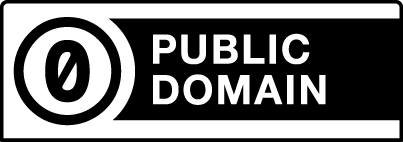![[Laser cut and engrave] Wooden 3D Snow Globe](https://image-res.xtool.com/resource/xtool/community/attachment/xtool-community/002b6f10-003a-4e12-b91b-ad82eaa0fead.png?x-oss-process=image/resize,w_1200,h_900,limit_0/interlace,1/format,webp/auto-orient,1)
Wooden 3D Snow Globe

Information
Immerse yourself in the magic of 10 meticulously layered, different solid wood type panels that bring these snow globes to life. Each layer contributes to a stunning three-dimensional effect, capturing the essence of a snowy scene in captivating detail. The layers of varying hues add depth and warmth, creating a visual masterpiece that embodies the spirit of the season.
This is one of a set of 3 I created for my online shop. Each layer is a different type of wood. I use 3mm strips of solid hardwood instead of 3mm plywood. In order to offset the density difference between hardwood and plywood, I select "Lower the focus" in the settings. This is for the S1 20W. I cut these with my D1 Pro as well, and usually need to make 2 passes to cut all the way through.
Instruction
Step1: 3D Snow Globe for Christmas
Below you'll find the steps for the S1 and the D1 Pro. There are 5 canvases due to the different types of wood used. These steps are for XCS. Adjust accordingly for Lightburn.
Settings for the project:
- Inches: 6" (w) 5.102" (h)
- MM: 152.39mm (w) 129.59mm (h)
**Check each layer and make sure each item has the exact same dimensions. I may or may not have learned this little gotcha the hard way.**
S1:
- Place the material on the baseplate and click auto-measure
- Mark the processing area
- Verify the project is within the processing area
- Double-check the settings and verify Cut is selected
- **If using solid hardwood like I do, select “Lower the focus”
- Click Framing and verify the project is contained within the material
- Go to processing and run the job
- Once the job is complete, do not move the laser or the material and verify the material is cut all the way through. If not, process the job again.
D1 Pro
- Place the material on the baseplate and run Framing to verify the project is within the edges. Adjust as needed.
- Double-check the settings and verify Cut is selected
- Go to processing and run the job
- Once the job is complete, do not move the laser or the material and verify the material is cut all the way through. If not, process the job again.
Step2: Sanding and preserving
Once all the pieces are cut, I use very fine sandpaper (I use 2500 grit) and lightly sand away any char on all edges. Be VERY careful around thin sections as they will break off easily (another lesson I may or may not have learned the hard way). I lay each piece on a flat surface and use a 220 grit sponge sanding block to carefully smooth out the overall surface.
After sanding, I apply Walrus Oil Furniture wax to each layer to help preserve the piece.
Step3: Glue it all together
Apply glue to the front and back outer edges of each layer, except the first and last layers. Only apply glue (I use Titebond II) to the front facing layer of one and the back facing layer of the other.
- Laying the pieces flat, start with the piece marked with 1 in the attached images as the bottom layer.
- Apply glue to the back and front faces of a spacer piece (marked Spacer in the image) and lay it on top of the bottom piece, using gentle pressure, make sure all edges line up.
- Wipe way any excess glue
- Continue layering adding a spacer piece between each layer and wiping away any excess glue before adding another layer.
- The last layer will be a spacer. Only apply glue to one side. I know most will say this is an unnecessary statement, but some people (like me) like to apply glue to everything all at once and end up putting glue on both sides.
- Clean up any excess glue, being careful on the inside edges as to not break any of the thinner pieces off. They can be glued back on, but it is a pain, and if you are using plywood, the top layer of plywood can chip off.
Step4: Finishing it off
After all layers are glued together and any excess glue is cleaned up, making sure all edges are still aligned, I lay the piece flat and place something with a bit of weight to it on top to help press the layers together. Depending on the glue you use, wait until the pieces are bonded and cured, then sand the outside edges smooth. After sanding, I apply a good coat of Walrus Oil Furniture Wax to seal the edges.
All done!

